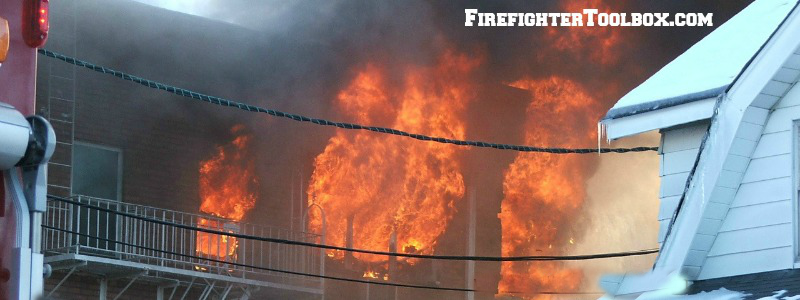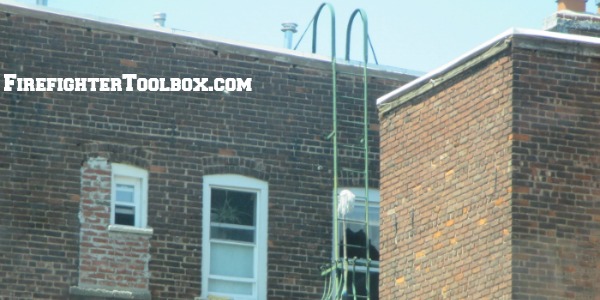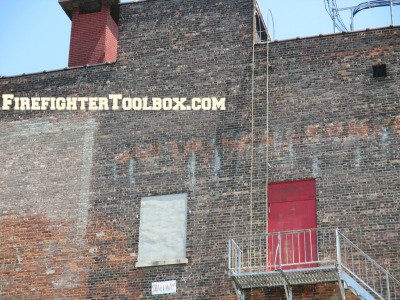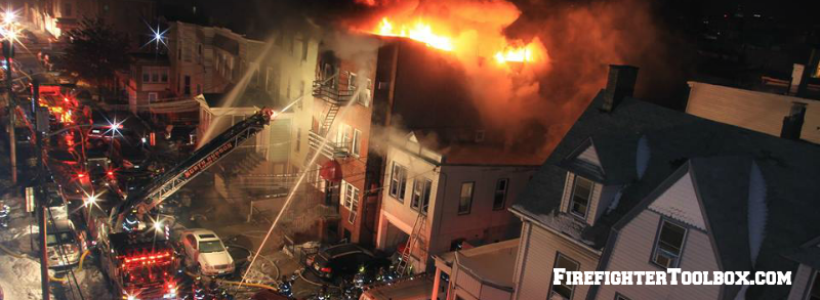3 Ways To Access The Roof Quickly – Part 3
In the previous two parts of this article we discussed using adjoining buildings and ladders to get to the roof. Now we will concentrate on the last way to get to the roof — the fire escape.
 #3 – Fire Escapes
#3 – Fire Escapes
Fire escapes are the third way to the roof of a Type 3 ordinary construction building. Using the fire escape is the most dangerous and least reliable way to gain access to the roof.
 Caution Is A Must
Caution Is A Must
Caution should always be used whenever climbing on fire escapes. These exterior means of egress are usually not well taken care of, besides getting a coat of paint every couple of decades (if that even happens).
It is our responsibility to check out these fire escapes long before the building has a fire in it. We should be checking them during our building surveys or during our fire inspections.
Another reason not to use the fire escape is that it may be in danger of fire impinging upon it. We do not need to be cooked while trying to access the roof.
Getting Tools To The Roof
Carrying tools such as rotary saws, pike poles and forcible entry tools is a difficult task when climbing a fire escape. Try this instead:
- Have two members of the roof team climb up the fire escape and drop two rope bags down to the firefighters on the ground.
- The firefighters on the ground tie the tools to the rope and the roof team hauls them up.
- The remaining firefighters then make their way up the fire escape, being careful not to overload the fire escape.
 Which Fire Escape To Use
Which Fire Escape To Use
To access the roof via the fire escape, you must locate the fire escape with the gooseneck ladder. A gooseneck ladder is a vertical ladder attached to the exterior vertical wall of the building and to the roof. This fire escape is usually located in the rear or side of the the structure.
(Other fire escapes are simply used for occupant egress, for firefighter VEIS or by the firefighter assigned to the Outside Vent position.)
Access & Size-Up
To access the gooseneck fire escape, you may need to breach a locked gate or fence, so be sure to bring your hook and Halligan along. It’s also advisable to watch out for dogs in the rear yard as well.
Once you have located the fire escape with the gooseneck ladder, be sure to size it up. Look for collapsed steps and rusted away connection points such as railings and platforms. If the fire escape looks unreliable and your gut is saying the same, immediately advise command of the situation.
 Climbing Safely
Climbing Safely
When climbing up the steps of the fire escape, place your feet on the outsides of the steps, that is, closest to the stair stringers. This location should be the sturdiest and may prevent the collapse of a stair tread. This is similar to the method used to ascend or descend stairs in a basement fire.
Once you reach the topmost fire escape platform, you will encounter the gooseneck ladder. Again, you must do a size-up of its stability. Shake and pull on it, checking that it is firmly secured to the buildings wall and roof. The time to find out the ladder is not connected is on the platform below — not halfway up to the roof on the gooseneck ladder.
Do Work & Get Down
Once on the roof, it’s time to work. When your tasks are complete and command is notified, then safely get off the roof. Remember, there is no reason to be on the roof any longer than you are needed up there.
Be safe up there and get the job done!
Photos courtesy of James Wood, Sr., Brett Dzadik and John Hayowyk, Jr.
Check out the complete series here!
3 Ways To Access The Roof Quickly
Part 1: Adjoining Buildings
Part 2: Ladders
Part 3: Fire Escapes





